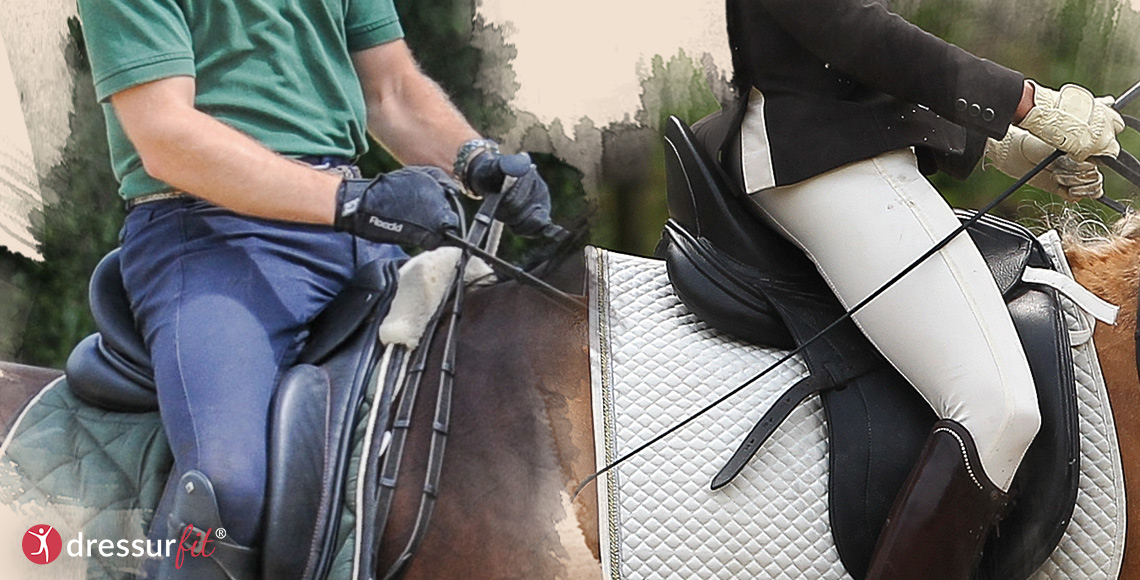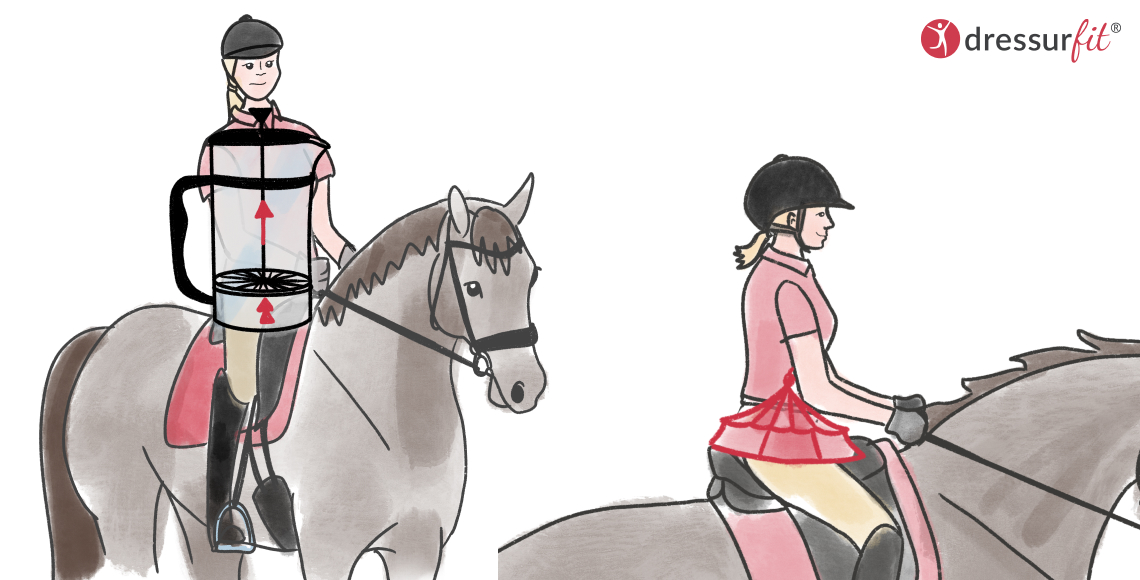
The Deep Seat
Flying down the long side at an extended canter, united as one, the motion of horse and rider inextricably intertwined. Riding transitions and movements with nearly invisible aids requires a supple, flexible, and stable seat. Mainly, it takes a deep seat to be able to optimally feel the horse and influence the frame and movement at all times. “A deep seat is important because that’s how I connect with my horse via my seat and lower back. I can only sit softly if I have a deep seat,” Benjamin Werndl emphasizes. “And when I sit deeply and am connected to my horse, I can influence him. I can give aids from my seat; and that makes everything seem more elegant – and it’s also softer.”
Some tips for a deeper seat
Don’t pinch with your knees. Pressing your knees too tightly into the flap of your saddle will block your seat. At the same time, your knees shouldn’t be too loose as they’ll flop around. Imagine a little tin soldier: the metal legs fit precisely over the horse’s back; there is no air in between, but they also don’t pinch the horse.
Benjamin’s tip for a deeper seat
Additionally, it’s important to align the pelvis correctly and sit evenly on your buttocks, that is to neither lean forward nor on your coccyx. You want to be able to tuck your pelvis lightly while leaving your belly forward. Don’t suck in your stomach as that makes your core unstable. And breathe out. “When I feel myself sitting correctly in the saddle, I breathe out. Bring awareness of this feeling of sitting in the saddle and breathing out, and take it with you,” Benjamin suggests. Breathing out automatically activates your pelvic floor, muscular tissue that’s incredibly important for a deep seat. You can imagine the tensing of the pelvic floor as a French press coffee maker. When you breathe out, the filter is pulled upward a little bit from the bottom. And that’s how you use suction to pull your horse’s back up and yourself into your horse’s back. Benjamin describes the feeling of sitting deeply in the saddle like this: “It feels as smooth as skiing in deep, powdery snow, it’s very soft. Not only do I think of sitting deeply in the saddle, I also imagine becoming one with my horse.” He laughs: “It’s a bit like Avatar.”

The key to a deep seat is balance
Should a horse come out tense, Benjamin doesn’t wait until the horse is relaxed before sitting down in the saddle. Benjamin emphasizes that a deep seat is also a great tool to get a horse to be softer and more supple because light aids can only be given from a deep seat. But what do you do if the horse is not allowing a deep seat? The key to a deeper seat is balance. “When the horse is moving in balance, he will be more likely to allow me to sit deeply. If he’s in flight mode when I want to access his back, he’ll be even more flighty. Balance is the be-all and end-all, everything is related to the horse’s balance.” At the trot, we first try to get our horses to swing over the back with a smaller trot before we start asking for a bigger trot. In the canter, it’s the other way around. Here, we first work on a good basic canter with a fair amount of jump, not too short behind. And only when the wave of the canter motion travels across the entire topline do we canter a bit smaller.
Sitting deeper in the saddle is a matter of your rider fitness
“The other key to a deep seat is of course enabling myself physically to sit deeply – to be fit and regularly work on my own balance, stability, and flexibility. There are certain physical requirements for developing a deeper seat, among them supple hips, especially the ability to inner-rotate and to extend the hip flexors. This enables a more relaxed posture in the saddle as well as added range of motion. Strong core muscles aid in maintaining stability and balance in a deeper seat. If the deep muscles of the torso are weak, the rider will become rigid, tighten the muscles in the hip and buttocks and lift himself millimeters to centimeters out of the saddle.
It’s important to have good body awareness and the ability to independently use muscles of the torso, pelvis, and legs, so you can, for example, briefly create tension in your lower back to half halt without simultaneously tightening the inside of your thighs and pushing yourself out of the saddle. The good news is that all these things can be improved out of the saddle. Fitness coach Marcel Andrä says: “The right exercises and a consistent training schedule are guaranteed to get you sitting more deeply in the saddle and closer to your horse.”
Get your individual training plan now and work specifically on your rider fitness with DressurFit® to sit deeper in the saddle! Take your first test now!
